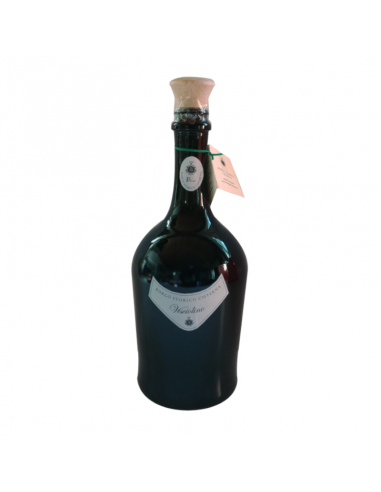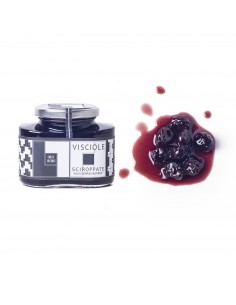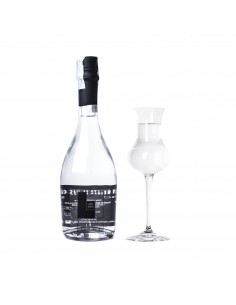Visciolino
Here it is a specialty that will amaze you from the very first sip, the Visciolino, a particular flavoured dessert wine, not too sweet, with a slight bitter aftertaste that reminds the real taste of sour cherry. A perfect wine for the after meal, served combined with homemade cookies, but also next to cheese and jam for a match so bold as surprising.
Type: Sweet Wine "Visciolino"
Producer: Azienda Borgo Cisterna
Made in: Marche (Italy)
Alchol Content %: 16% vol
The Visciolino is obtained only with visciole cherries grown and processed by Borgo Cisterna. This small fruit is used for centuries to get a dessert wine, served on our tables at the dessert, but the sour cherry also contains many natural ingredients, has a wealth of melatonin ideal to combat insomnia, also known as regulator of glycaemia and cholesterol.ity
Borgo Storico Cisterna Azienda Agricola. Via Santa Lucia Cisterna, 12. Macerata Feltria (PU). The firm Borgo Cisterna is entirely dedicated to welcoming its guests, whether they want to have a pleasant holiday, whether they want to just enjoy the restaurant's cuisine. Borgo Cisterna has always been, since the Roman period and perhaps Etruscan, a site voted to agriculture, and here still fruit trees, herbs, olive trees and vegetable crops grow. The products of the farm's crops are an integral part of the kitchen, according to the family tradition and the original recipes of the territory. The type of accommodation and the particularity of production mean that Borgo Cisterna is classified at the Marche Region with the highest 5 woodpeckers and its attention to the preservation of the heritage of regional biodiversity give to Borgo Cisterna the appointment of Guardian Farmer from ASSAM.
Visciole cherries, wine, alcohol, sugar.
General Information: Choosing the right wine is linked to the dish to which it accompanies. In general, sweet and sparkling wines match best with baked products, creams, dried fruits and aged cheeses. How to drink: Each wine must be brought to the table at the proper temperature; the white and rose wines should be served at a temperature lower than the red ones to exalt the organoleptic properties of wine that would be altered if the service temperature is not the proper one. All the wine goes oxygenated before being served, the time varies depending on the aging of the wine, if a wine is young this procedure is entirely superfluous. Red wines require a longer oxygenation time than the white ones. If you want to taste different types of wine with vary degrees, it is advisable to adopt a policy of climb; wines with a lower alcohol content should be drunk before.











































